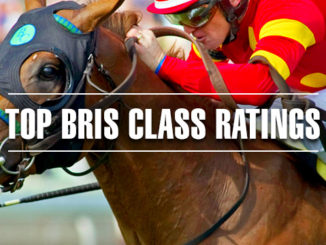
WHAT’S THE DIFFERENCE BETWEEN A “RACE” RATING AND A “CLASS” RATING?
A Race Rating measures the overall quality of horses which actually competed in a race – the higher the number, the tougher the competition.
A Class Rating measures a horse’s actual performance in a race – the higher the number, the better the performance.
WHO CREATES THE RACE & CLASS RATINGS?
The Race & Class Ratings are generated daily by computers at Brisnet.com. A Race Rating is calculated for every race in North America, while a Class Rating is calculated for every start of all horses in North America.
WHAT IS THE THEORY UNDERLYING THE RACE & CLASS RATINGS?
The Race & Class Ratings are based on the premise that a horse’s performance in any given race can be accurately gauged by considering the horses which the individual has beaten, those that have beaten him, and by the margins involved. Final time is NOT a factor used in calculating the ratings.
HOW ARE THE RACE & CLASS RATINGS CALCULATED?
Using proprietary computer algorithms, the recent Class Ratings for all horses in their recent races are calculated, adjusted and then recalculated every time any horse crosses a finish line. This calculation process creates complex inter-relationships among all Thoroughbred racehorses regardless of the track, distance, surface, or country the horses actually ran at. What makes the Race & Class Ratings such a powerful handicapping tool is the daily updates and constant adjustments made to the ratings which reflect the subsequent performances of all horses in every race. The net result of this extensive data crunching is reliable, objective data which can accurately quantify the relative merit of any Thoroughbred racehorse’s performance.
HOW SHOULD A HANDICAPPER USE THE RACE & CLASS RATINGS?
The Race Ratings are excellent tools for identifying which horses have truly been facing the toughest or weakest competition. Like the popular “Key Race” concept but more accurate, the Race Ratings accurately identify “class within class” – that is, they will separate the strong and weak fields of identical race types.
The Class Ratings provide a convenient means for comparing the relative merits of each horse’s recent races to that of its competitors. One of the great benefits of using them is you’ll spot winning horses which the speed handicappers miss. Look for the horse with the highest recent class ratings.
HOW MANY POINTS ARE CONSIDERED A “SIGNIFICANT” EDGE IN THE CLASS RATINGS?
A one-point edge over a competitor is considered “significant” and an edge of two or more points is considered a “substantial” advantage.
WHAT ARE SOME TYPICAL RACE & CLASS RATINGS FOR 3&UP MALES?
| Race Rating | Winner’s Class Rating | |
| An average Grade 1 stakes race | 120 | 123 |
| An average “OPEN” Claiming $10,000 race | 112 | 115 |
| An average Maiden Claiming $10,000 race | 105 | 108 |
The best races (Grade 1 older stakes males) will typically receive a Race Rating in the 120-125 range. And the winner of these races will typically earn a Class Rating in the 123 to 127 range.
A $10,000 “Open” Claiming race for older males will typically receive a Race Rating in the 111-112 range. And the winner of these races will typically earn a Class Rating in the 114 to 115 range.
A $10,000 Maiden Claiming race for older males will typically receive a Race Rating in the 105-106 range. And the winner of these races will typically earn a Class Rating in the 108-109 range.



